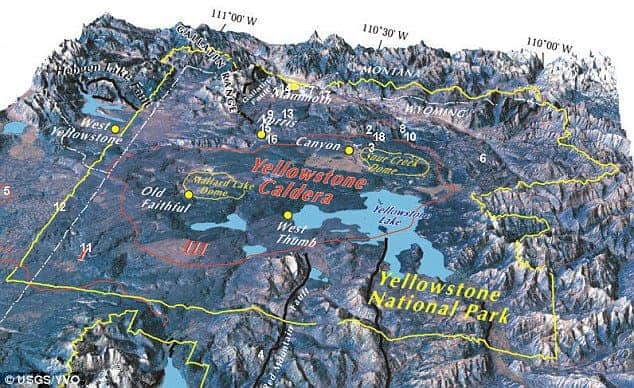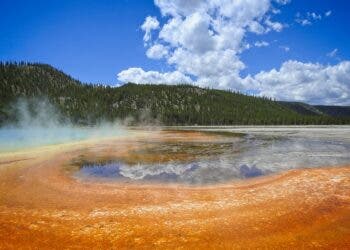
As the name implies, a supervolcano is just like a volcano, only on a far grander scale (ejecta volume greater than 1,000 km3). One of the hallmarks of a supervolcano is that it forms a wide depression called a caldera. New research suggests that not one but two closely spaced powerful eruptions from 630,000 years ago sculpted the massive caldera (72 x 48 km) around the Yellowstone supervolcano. In the aftermath of the two eruptions, which were 170 years apart, global warming was put on hold by the double cooling effect.
Winter is coming
“We discovered here that there are two ash-forming super-eruptions 170 years apart and each cooled the ocean by about 3 degrees Celsius,” said James Kennett, a geologist at the University of California Santa Barbara, and lead-author of the new study presented at a recent conference hosted by the Geological Society of America.
By peeling off the soil, scientists can learn fairly accurately how a region’s geology looked like, even millions of years ago. They can also use clues to determine not only if there was a cataclysm, such as a megaflood, but also when it happened. Seafloor sediments in the Santa Barbara Basin, which lies off the coast of Southern California, contain two layers of volcanic ash whose chemical fingerprint matches that of Yellowstone’s most recent supereruption.
The ash layers, which scientists call tephra, are sandwiched between sediments that, like time capsules, record information about the ocean and climate change at the time they were deposited.
Both ash and sediments told scientists that the Yellowstone supervolcano’s last eruption, which has been extensively studied, was not a single event. Instead, Kennett and colleagues found evidence of two closely spaced eruptions.
A massive amount of plume, ash, and dust was ejected by both eruptions, creating an atmospheric blanket that let less sunlight reach the planet’s surface. Around 630,000 years ago, the planet was just recovering from an ice age. The eruptions, however, put global warming on hold, causing two planetary winters.
Scientists inferred the temperature in the ocean following the eruption by studying the tiny shells of foraminifera that sank to the seafloor where they were buried and preserved in the sediment. Such shells have oxygen isotopes in their composition which are temperature-depended, revealing the surface temperatures in which the animals lived.
Together, the volcanic ash record and the foraminifera climate readings made it quite clear that the supervolcano eruptions caused two volcanic winters. The onset of the global cooling events was abrupt and coincided precisely with the timing of the supervolcanic eruptions. This was the first observation of its kind.
Kennett adds that the eruptions triggered feedback mechanisms that enhanced the cooling magnitude and duration. For instance, the eruptions might have led to increased sunlight-reflecting sea ice and snow cover or a change in ocean circulation that would cool the planet for a longer time.
“It was a fickle, but fortunate time,” Kennett said of the timing of the eruptions. “If these eruptions had happened during another climate state we may not have detected the climatic consequences because the cooling episodes would not have lasted so long.”
Yellowstone has erupted at least three times before: 2.1 million years ago, 1.3 million years ago, and 630,000 years ago. Geologists think we’re in the ‘right’ timeframe for another eruption. One recent study found the next supervolcano eruption could occur even within decades, with potentially catastrophic consequences for all life on Earth. It could also just as well happen in thousands of years.






